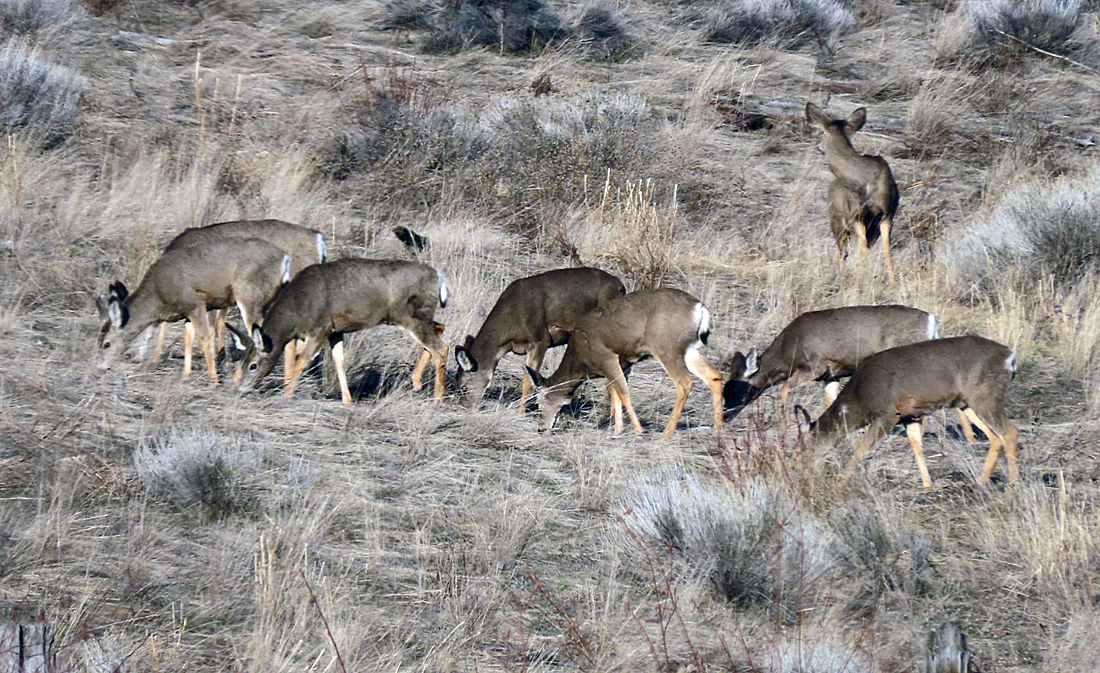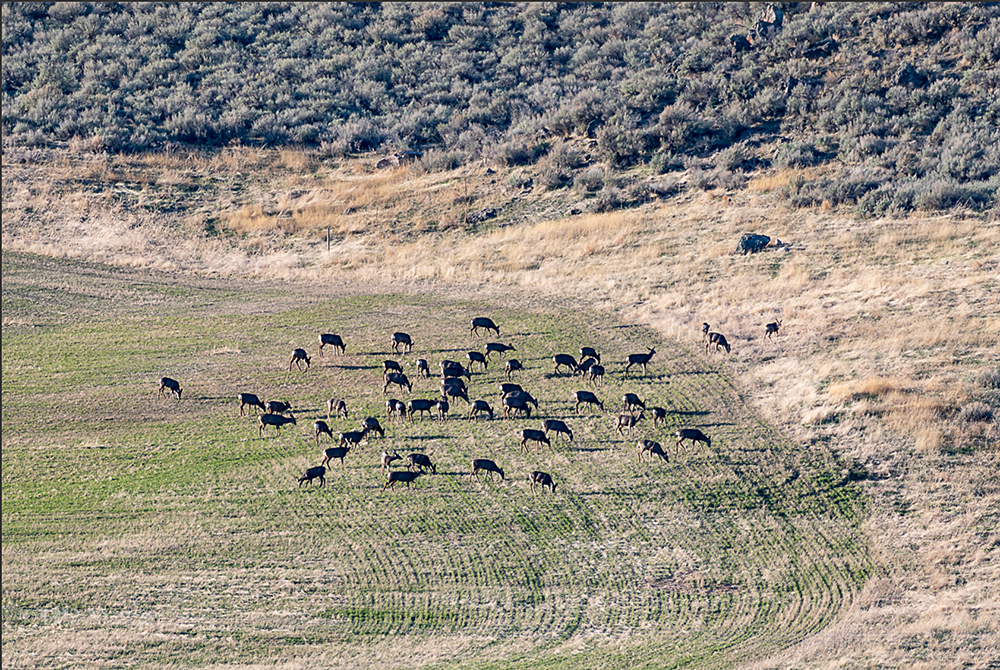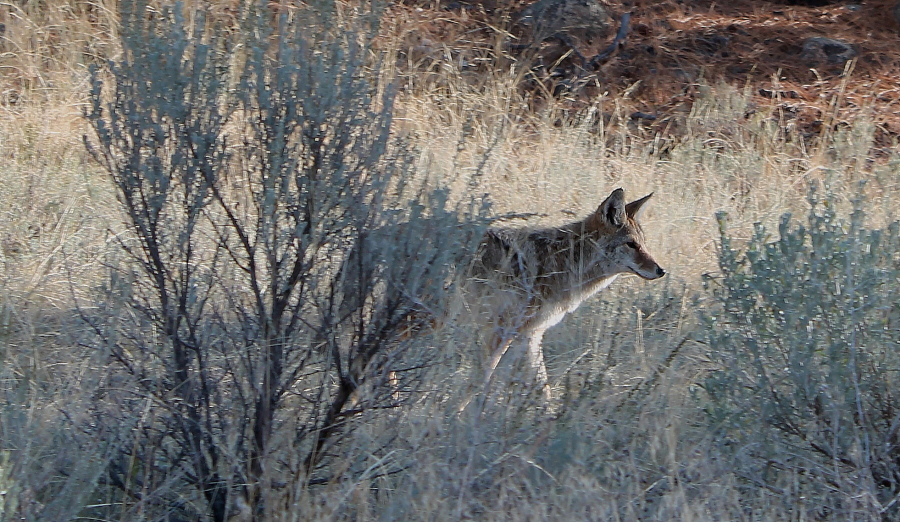With continuing covid restrictions, our website has become the substitute for monthly meetings. A regular feature at our normal meetings is “Nature News” with photos and stories of local nature from our members. So here is the online spring 2021 version. Enjoy! And many thanks to the photographers who contributed.
Lets go with mammals first.
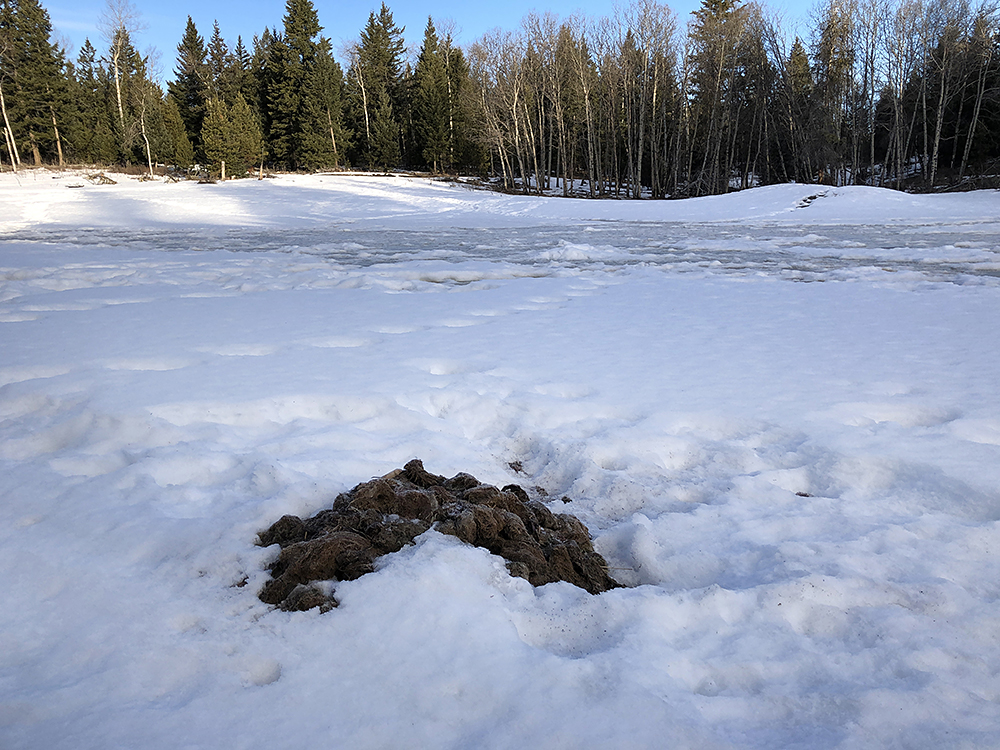
Seen in February with the pond still frozen and snow covered – here is where Muskrats spend the winter, under the ice and in a lodge made of matted vegetation and mud. Muskrats don’t hibernate but probably sleep much of the winter in between nibbling on their supplies of aquatic vegetation. Photo: © Alan Burger
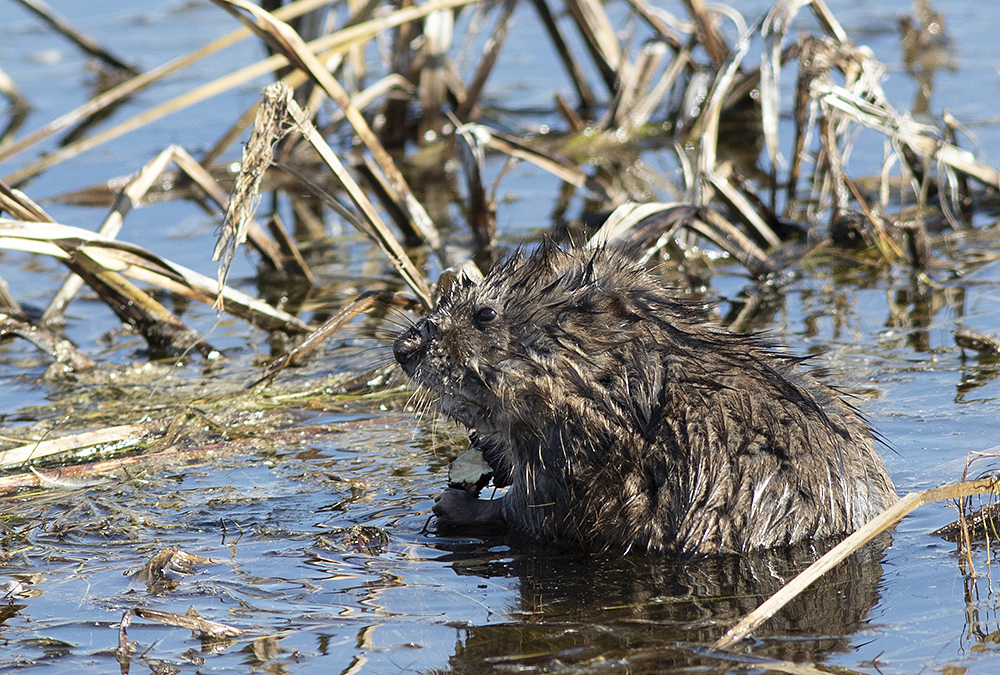
When spring arrives and the ice melts off their home ponds and lakes Muskrats become more active. Here, at Separation Lake, Knutsford, a young Muskrat munches on roots of a water plant. Photo: © Alan Burger
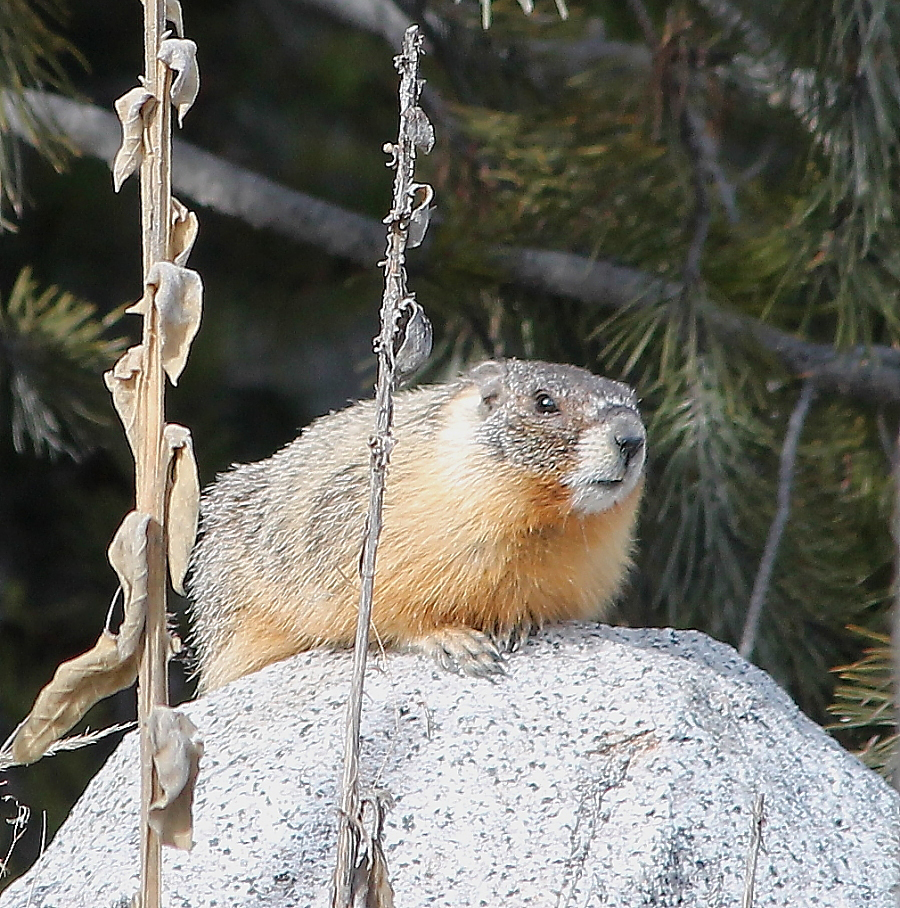
Another rodent emerging at this time of year is the Yellow-bellied Marmot. These large gophers hibernate for 7 to 8 months through the winter. It must feel really good after all those months to get out on a warm rock and enjoy the spring sunshine. Photo: © Cindilla Trent
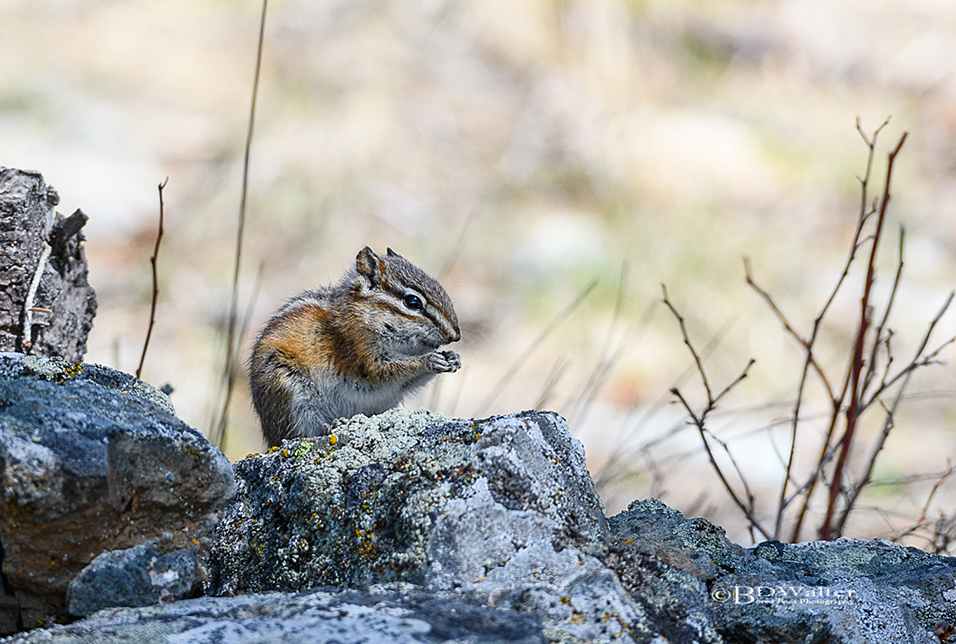
Another rodent emerging in April is the Yellow Pine Chipmunk. It is always a delight to watch these colourful and hyper-active little critters. Photo: © Bruce Walter
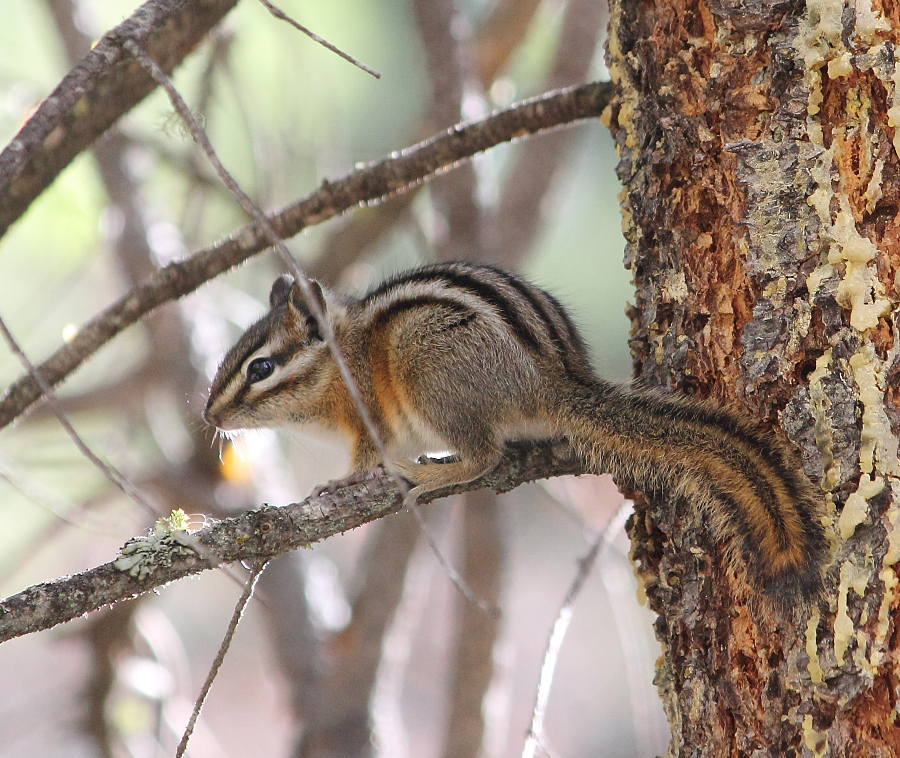
Another Yellow Pine Chipmunk. Related to squirrels, they are at home on the ground or in the trees. Photo: © Cindilla Trent
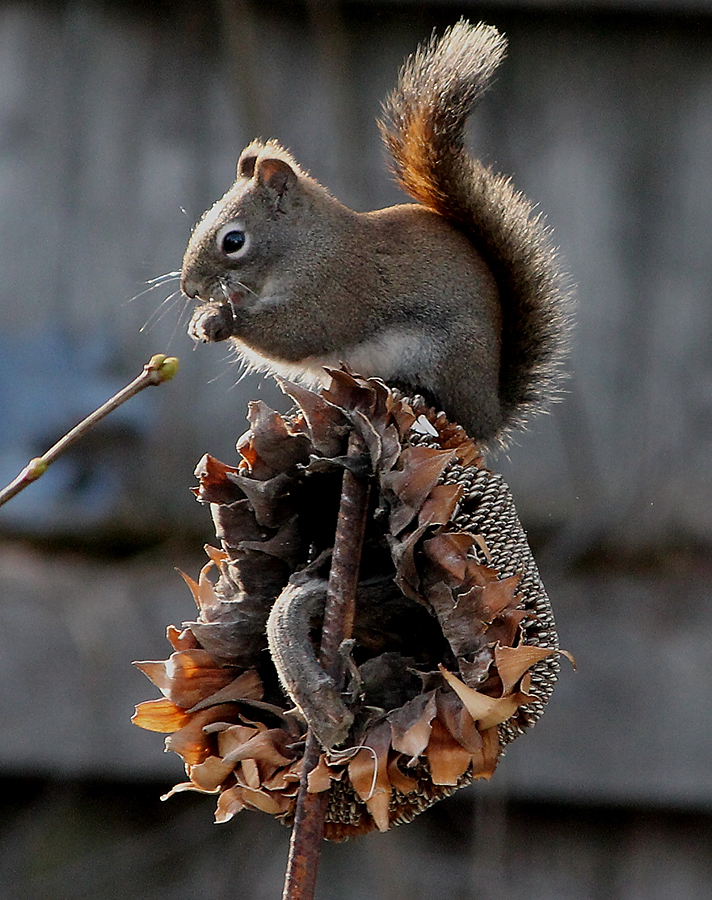
Red Squirrels remain active all winter, but one seldom sees them during the really cold and blustery winter weather. In spring they become much more lively, maintaining territories and seeking out mates. Here the squirrel is feasting on the old seed head of a sunflower. Photo: © Cindilla Trent
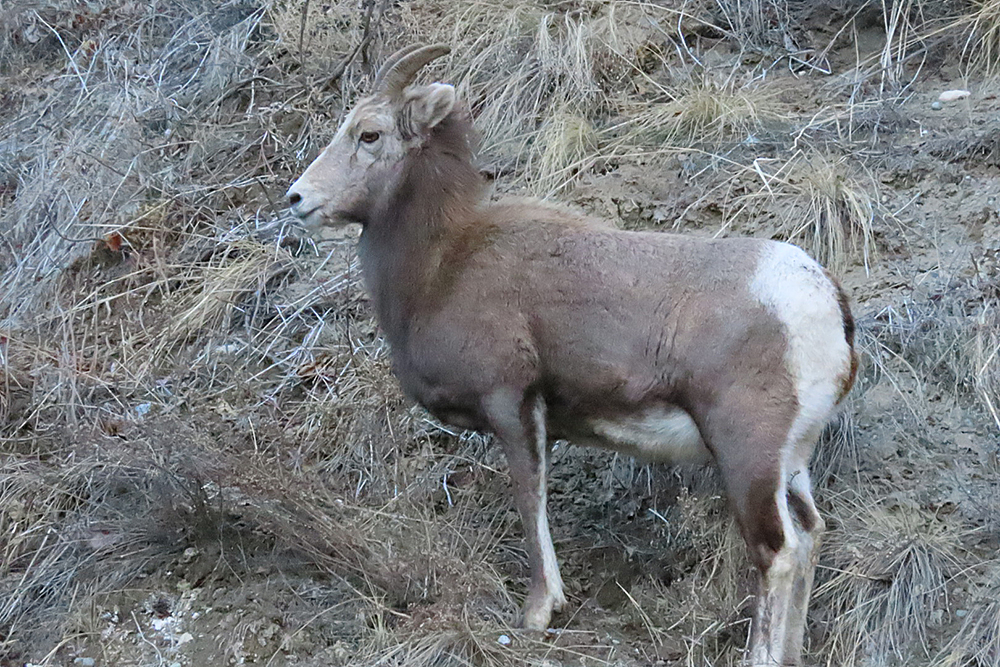
A young Bighorn Sheep near Spences Bridge. Small herds of these sheep are most often seen in the warmer valleys along the Thomson River. In pre-European times their range was much wider and covered much of the Nicola Valley. Photo: © Vic Newton
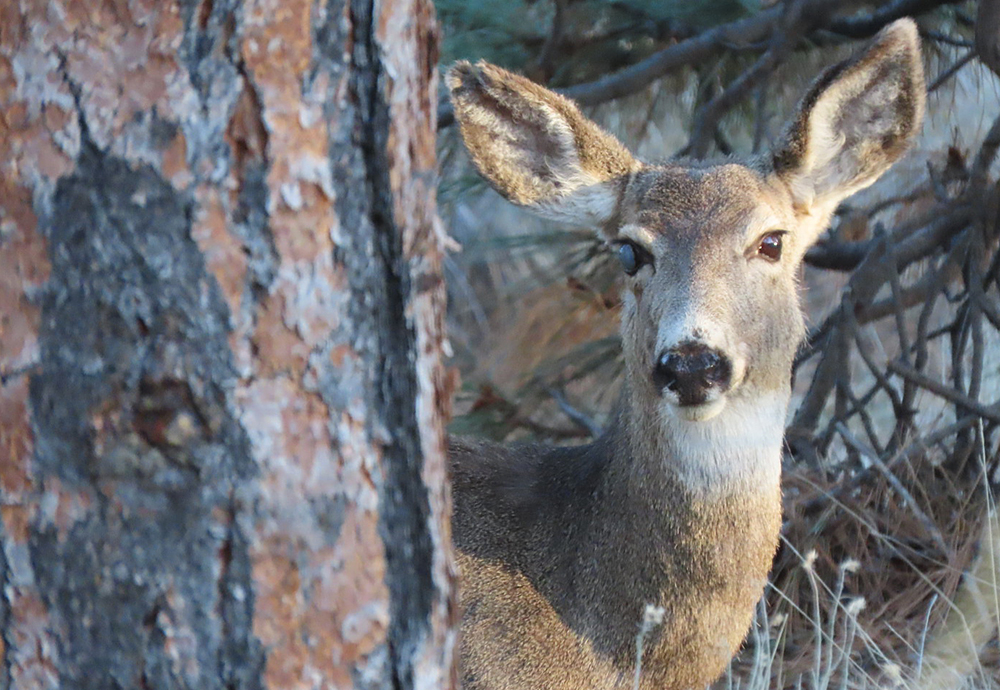
This Mule Deer has something wrong with its right eye – notice the opaque look to the eye. Despite this handicap the deer is in good shape. Photo: © Vic Newton
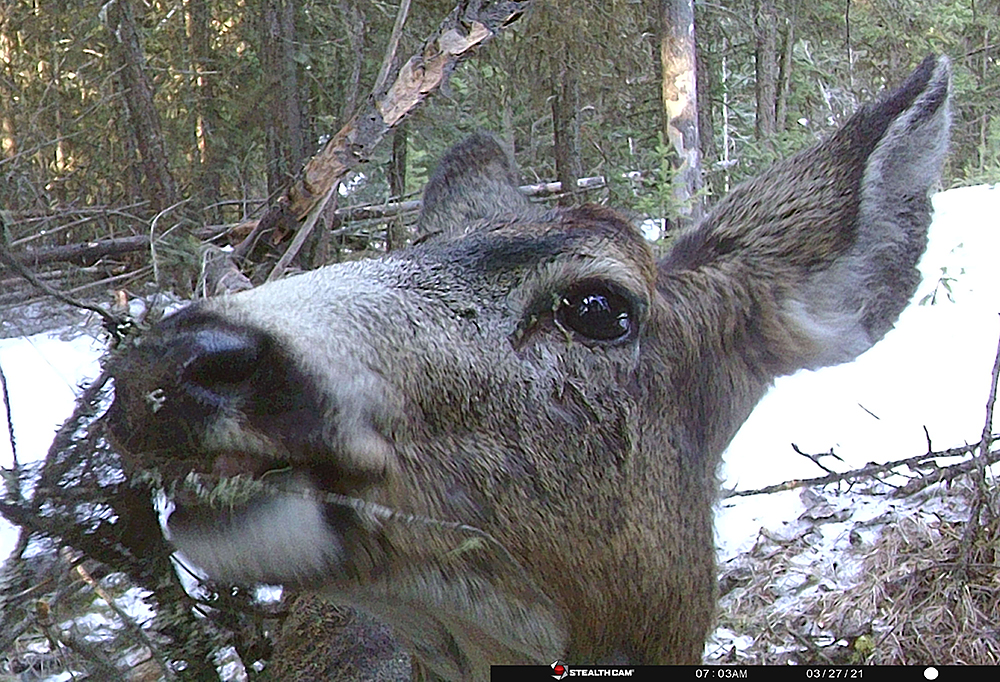
This Mule Deer had a portrait shot taken as it browsed on lichens right next to a wildlife camera set in a tree. Lichen-covered twigs had been placed around the camera to help with camouflage – Logan Lake ski trails. Photo: © Alan Burger
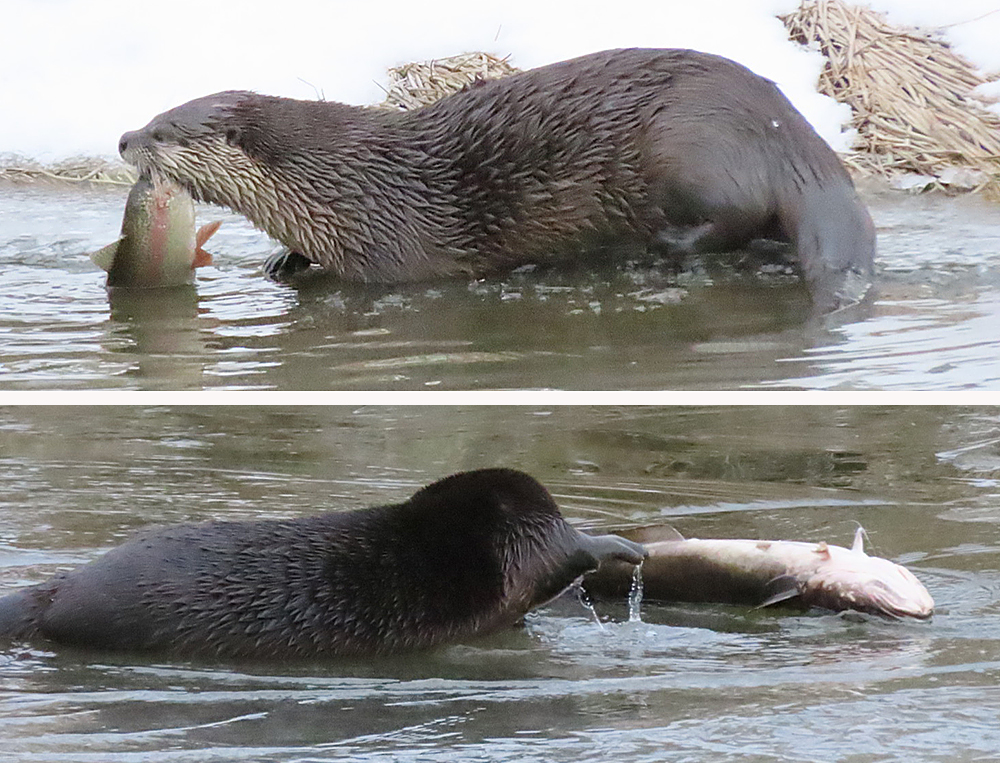
These River Otters in the Nicola River have caught fish to make any angler proud – a big rainbow trout above and an even bigger burbot below. Extremely dense fur keeps these otters warm even in the icy water. Photos: © Vic Newton
Some of our birds remain with us all winter, providing wildlife interest through the bleakest weather.
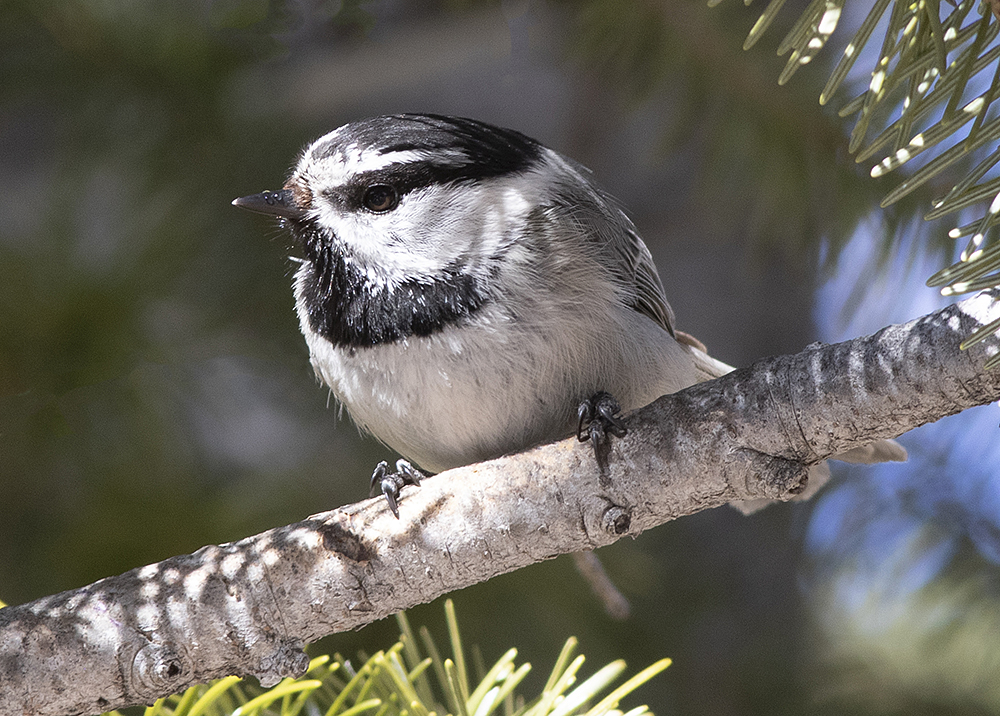
Mountain Chickadees, with their distinctive white eyebrows are common year-round in the forests through most of the Nicola Valley. In many areas they overlap with Black-capped Chickadees. Photo: © Alan Burger
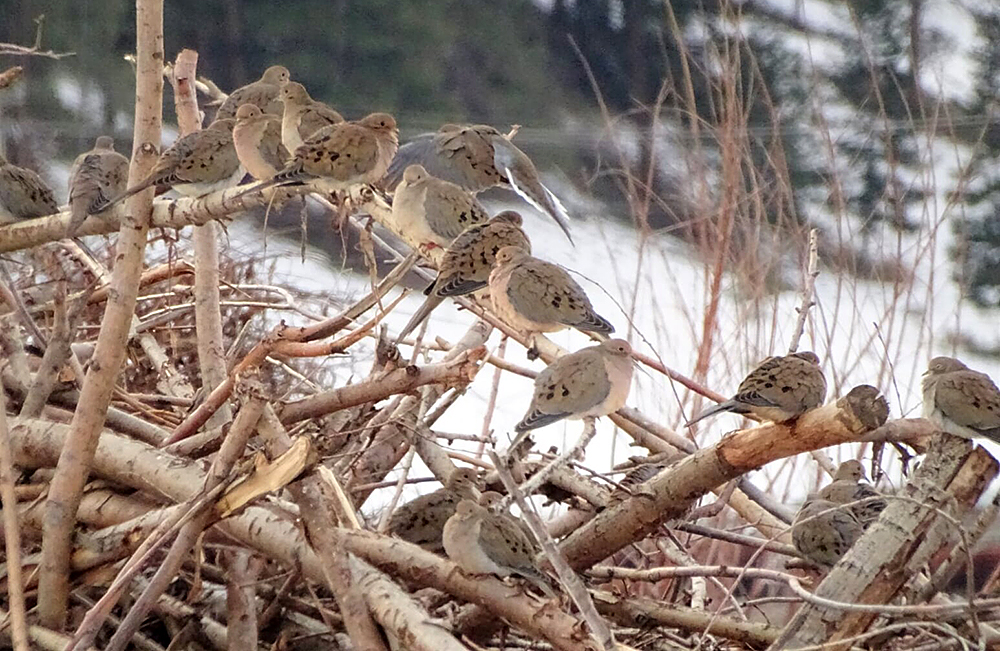
A flock of Mourning Doves having a break from foraging at a Nicola Valley feedlot. Photo: © Anne Pang
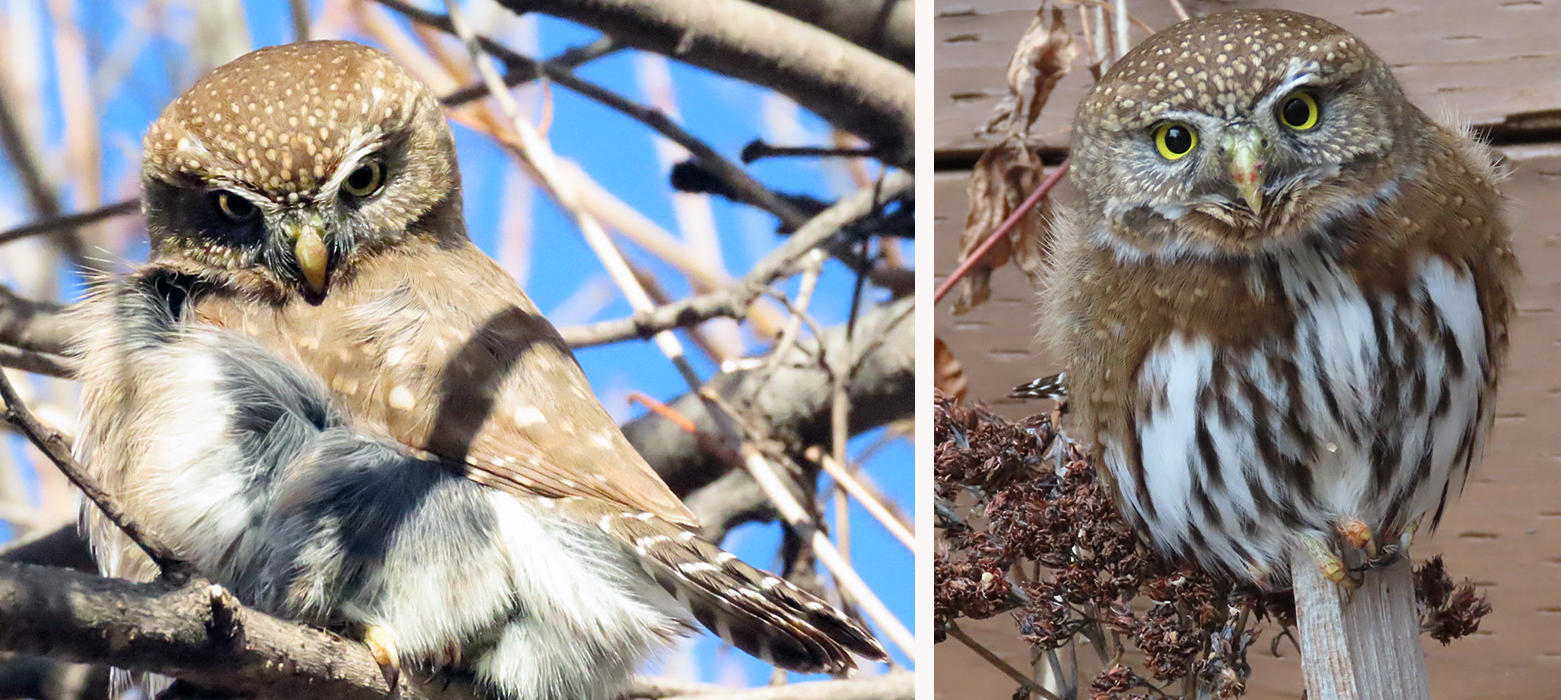
This Northern Pygmy Owl was a regular visitor in Vic and Susan Newton’s backyard, providing opportunities for great photos. These tiny owls are fierce predators, taking both mice and small birds. Photos: © Vic Newton
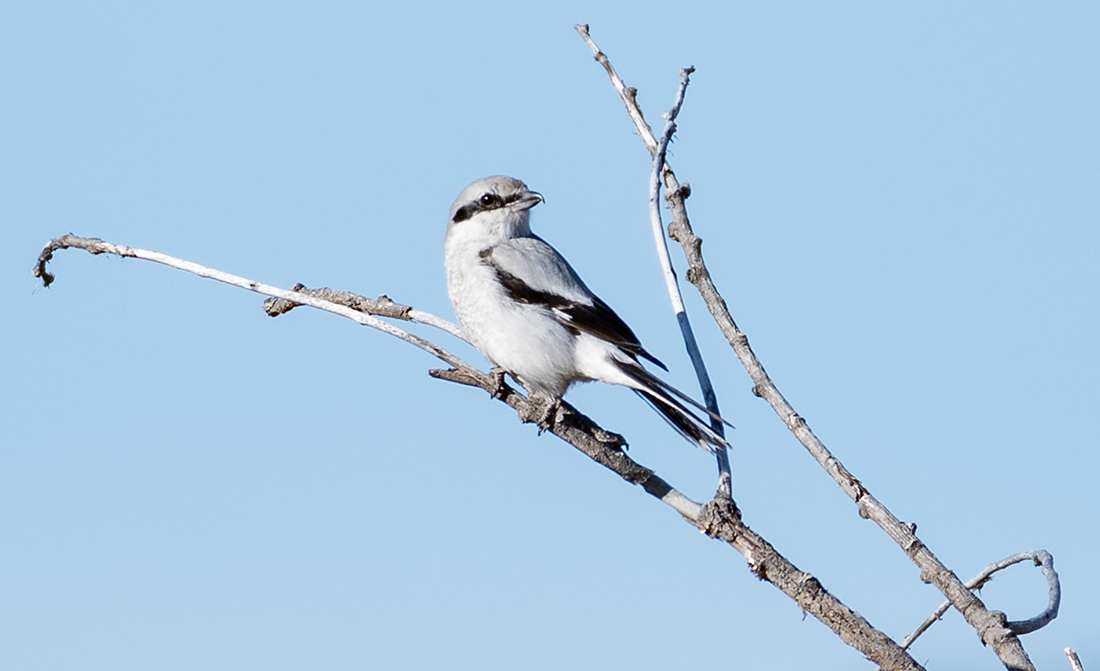
Northern Shrikes breed in summer in the arctic and boreal areas, but come south to overwinter with us. Although they belong to the songbird (Passerine) order of birds, they have developed characteristics of small birds of prey – using their strong hooked beaks to catch small mammals and birds. Photo: © Bruce Walter
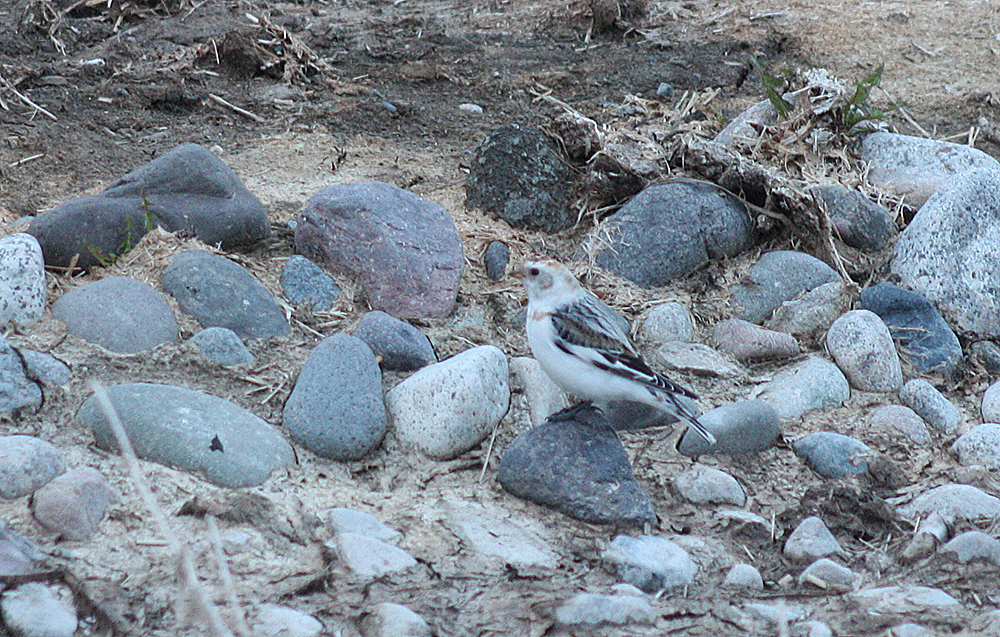
Snow Buntings are another winter visitor in our area. In April they start heading back to their arctic tundra breeding grounds. This photo was taken at a cow feedlot in Lower Nicola. Photo: © Diana Grimshire
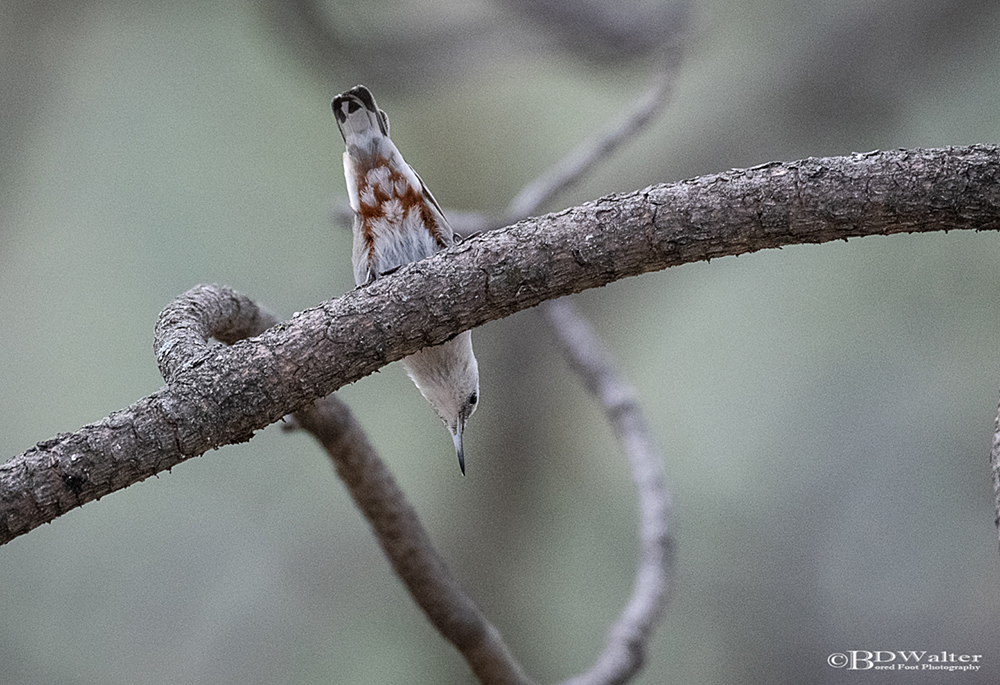
Nuthatches, like chickadees, remain with us all winter. Nuthatches and chickadees are often found in the same winter flocks, hunting for dormant insects and seeds in the trees. This is an unusual ventral view of a White-breasted Nuthatch – the least common of our three nuthatch species. Photo: © Bruce Walter
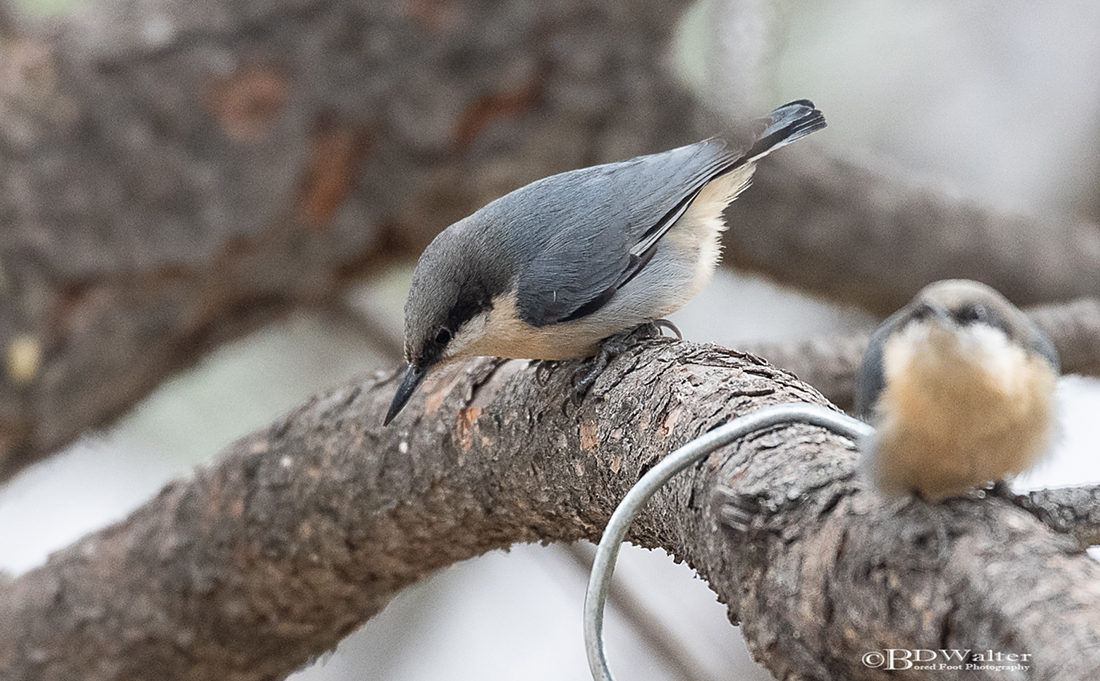
Pygmy Nuthatches are, as their name says, the smallest of our nuthatches. They are often found high in the branches of big ponderosa pine trees Photo: © Bruce Walter
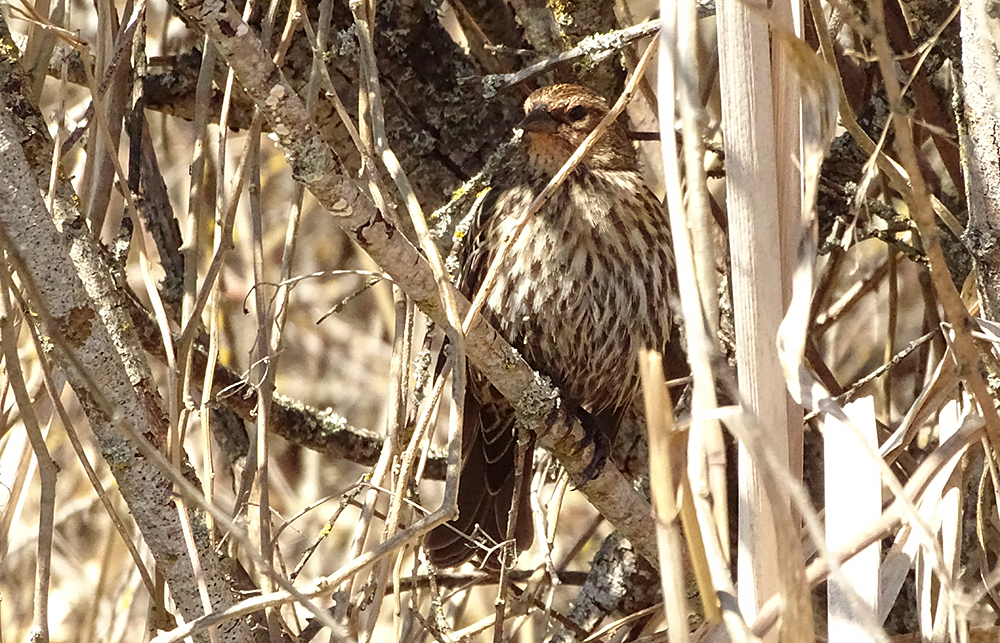
Time for the quiz. Can you identify this bird? Hint – it can be found in our area all year round but becomes more obvious when breeding season begins in spring. Keep scrolling down to see the answer. Photo: © Anne Pang
April is the time that many of the migrants return, having spent the winter in warmer southern latitudes. For some species this might be the southern U.S. or Mexico, but some of our breeding birds migrate as far south as the tropical forests of South America. It is always a joy to see them return in spring.
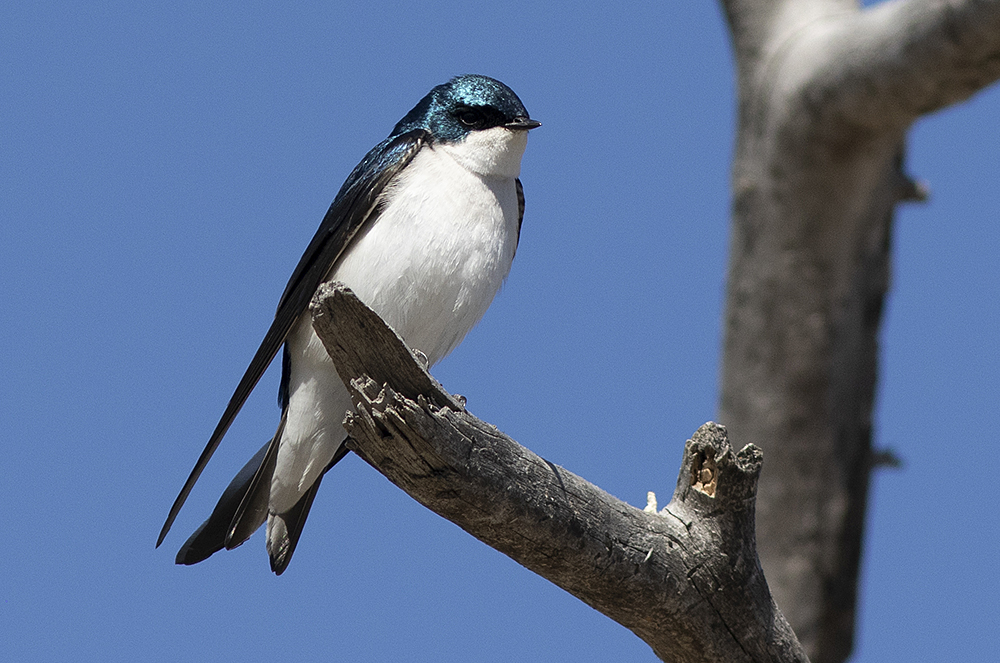
Swallows are the acknowledged harbingers of summer to come. Tree Swallows are usually the first to arrive in our area. This is a male with its lovely glossy plumage. Photo: © Alan Burger
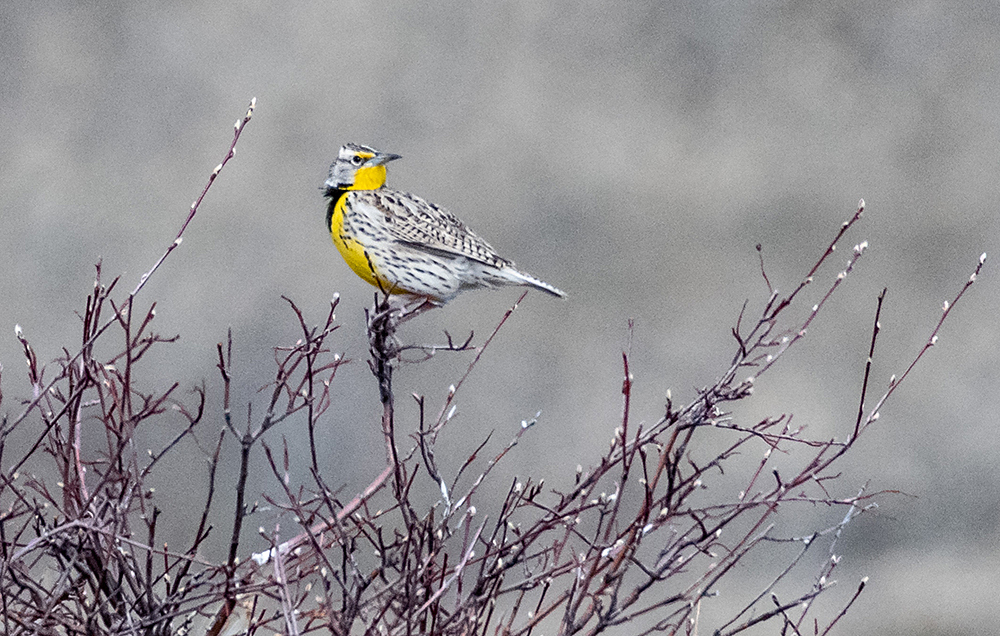
Western Meadowlarks are also early spring arrivals, and their lovely lilting songs drifting across the grasslands are a sure sign that spring is here. Photo: © Bruce Walter
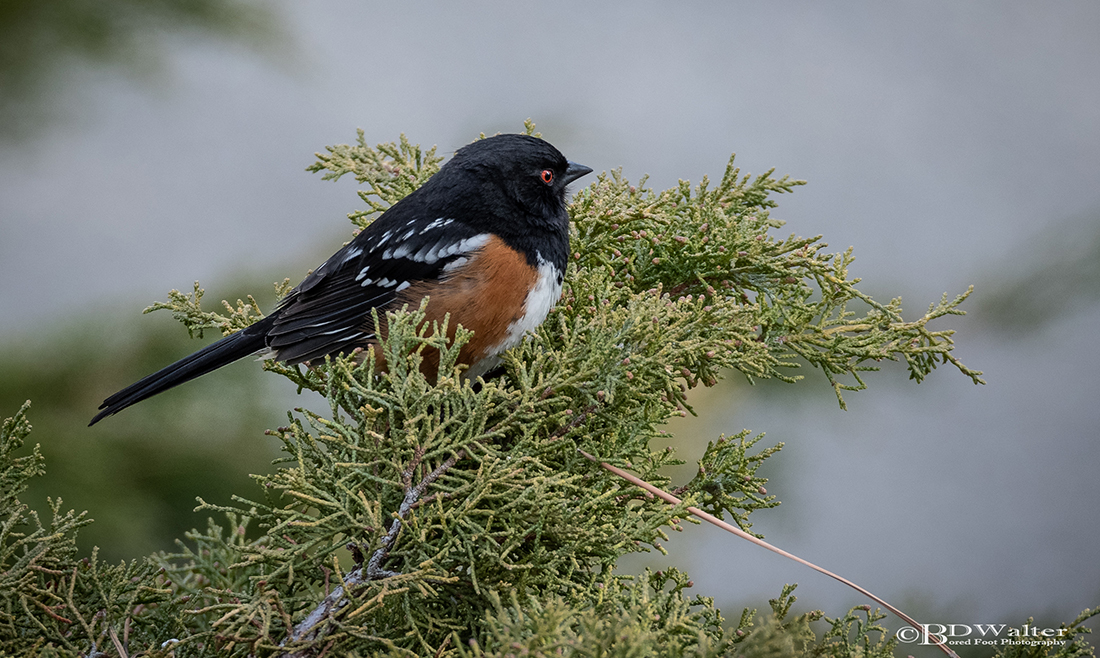
A few Spotted Towhees remain with us for the winter but most head south and then return in spring. Photo: © Bruce Walter
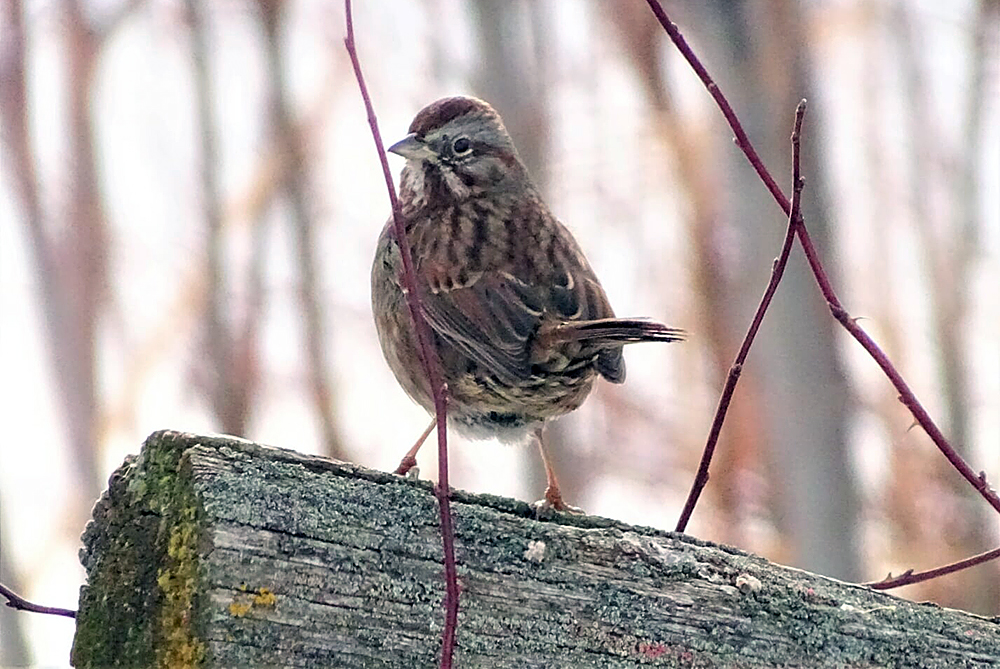
True to their name, Song Sparrows give loud voice to spring, as they establish their territories and start attracting a mate. Photo: © Anne Pang
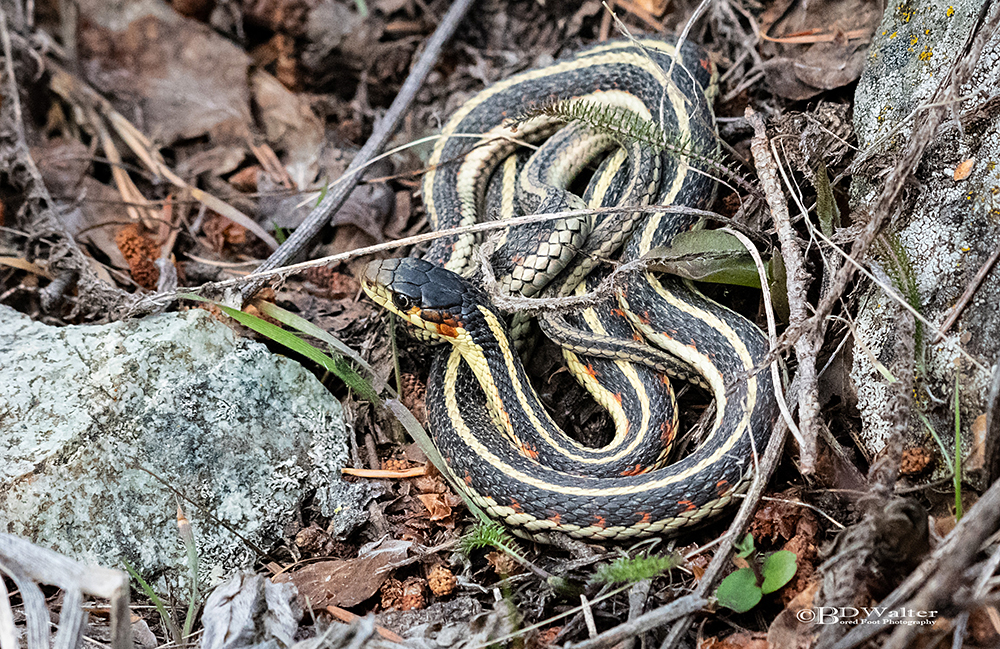
In April as the ground warms up, snakes begin to emerge from their winter dens (hibernacula). This is a Common Garter Snake – our most common snake in the Nicola Valley. Photo: © Bruce Walter.
As the ice leaves our lakes and ponds, huge flocks of waterfowl return to the Nicola Valley, some to breed here but many just in transit to breeding areas further north. Here are a few seen in recent weeks.
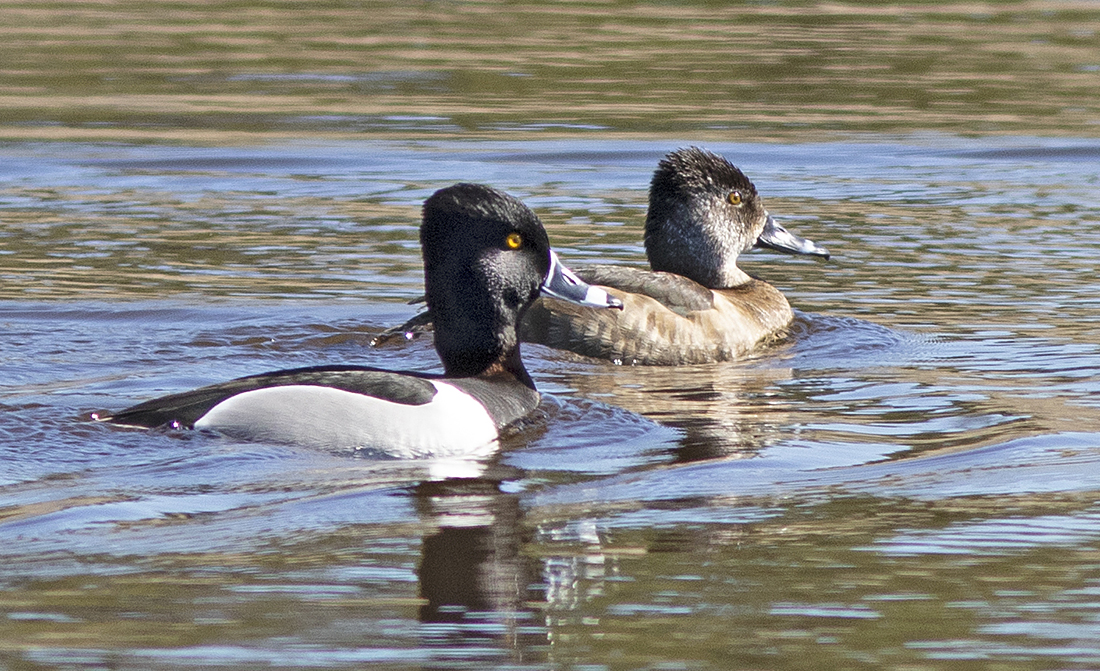
A pair of Ring-necked Ducks, male on the left, female right. These ducks dive down to feed on aquatic insects and worms on the bottom of ponds and lakes. Photo: © Alan Burger
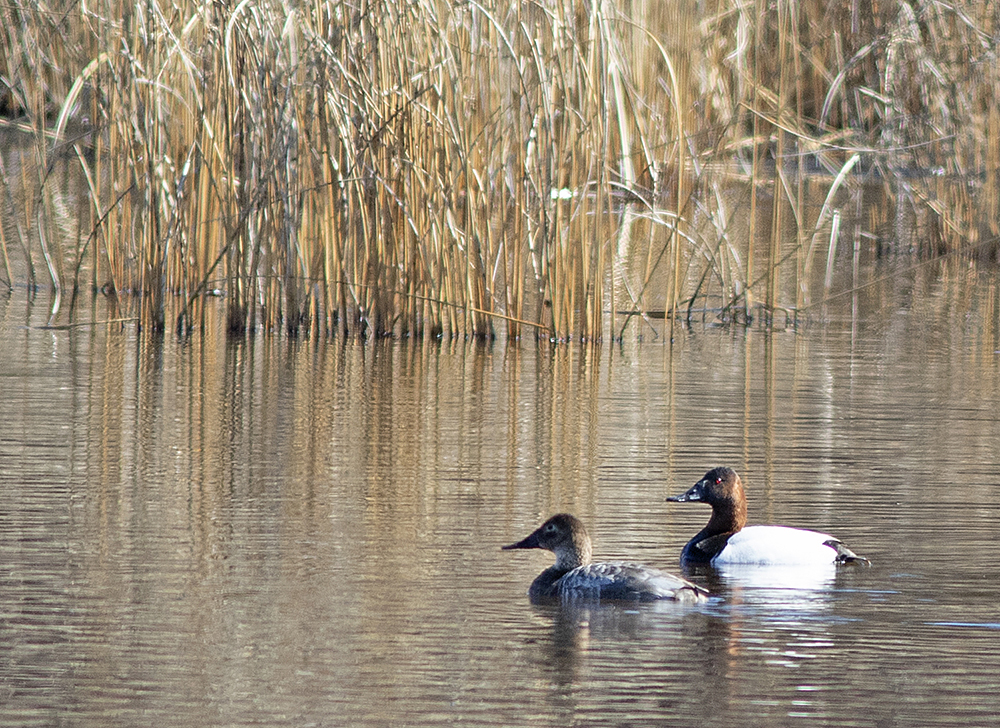
Another duck that dives underwater to find food is the Canvasback. Female left, male right – seen here in a pond in Tunkwa Provincial Park. Photo: © Alan Burger
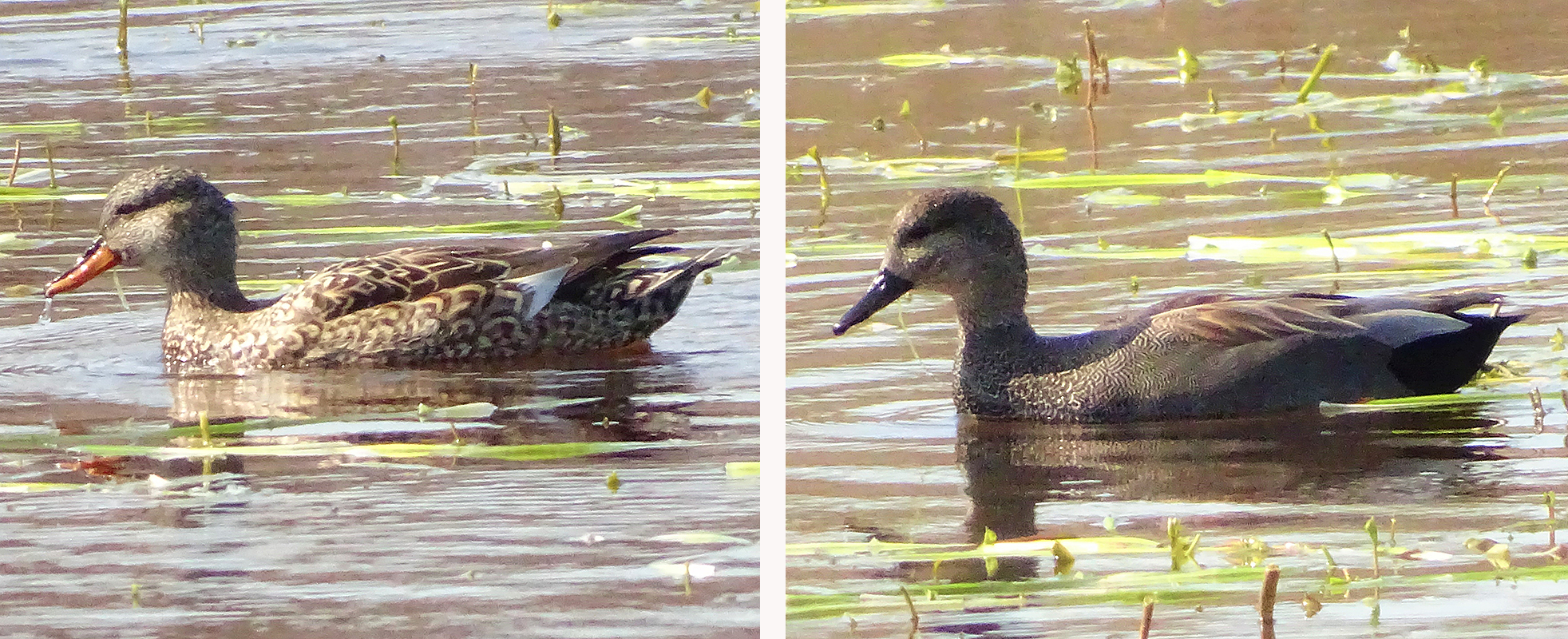
Gadwall are a big dabbling (surface-feeding) duck. The black vent of the male (on the right) is a diagnostic feature to look for. Photos: © Anne Pang
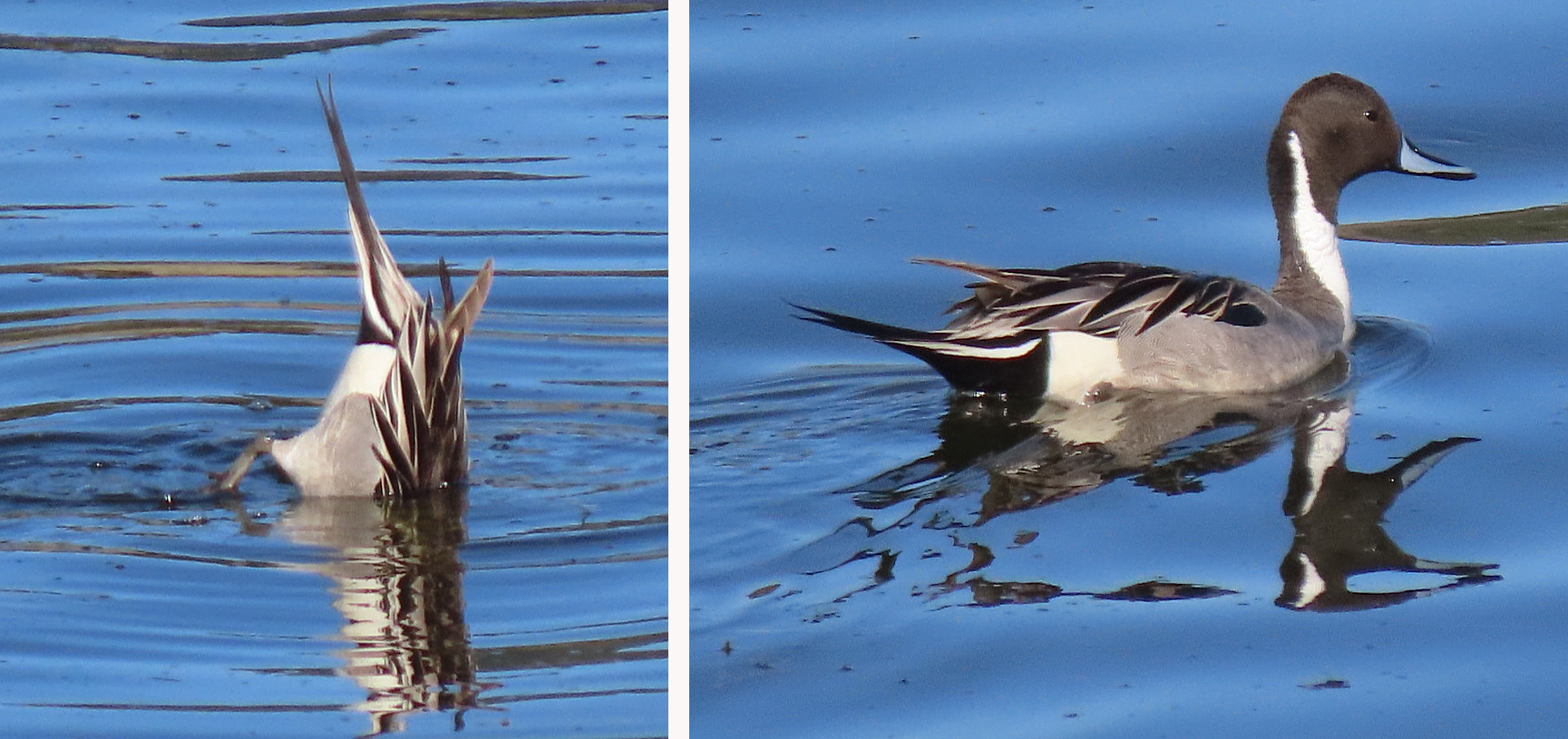
Even with its head underwater there is no mistaking a male Pintail, one of our most attractive ducks. Photos: © Vic Newton
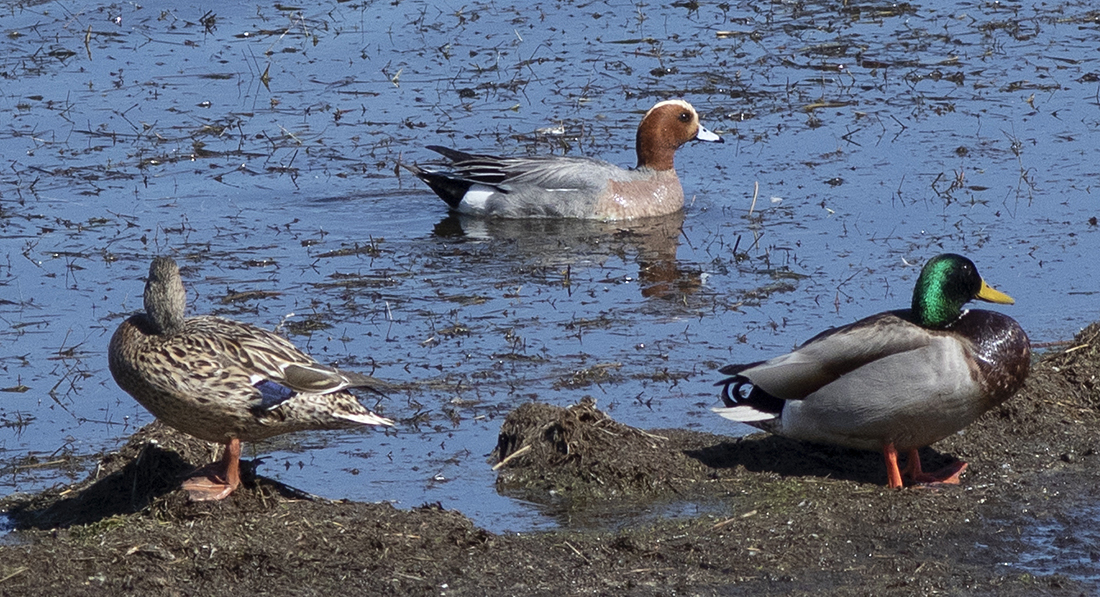
Eurasian Wigeons are close relatives of our common American Wigeon. Small numbers of this species regularly find their way from Asia to British Columbia. The brick red head of the Eurasian male differs from the green head of the local male. This April several Eurasian Wigeons were seen in the Nicola Valley – this was one of three seen on April 17th on Stump Lake. The ducks in the foreground are female and male Mallard. Photo: © Alan Burger
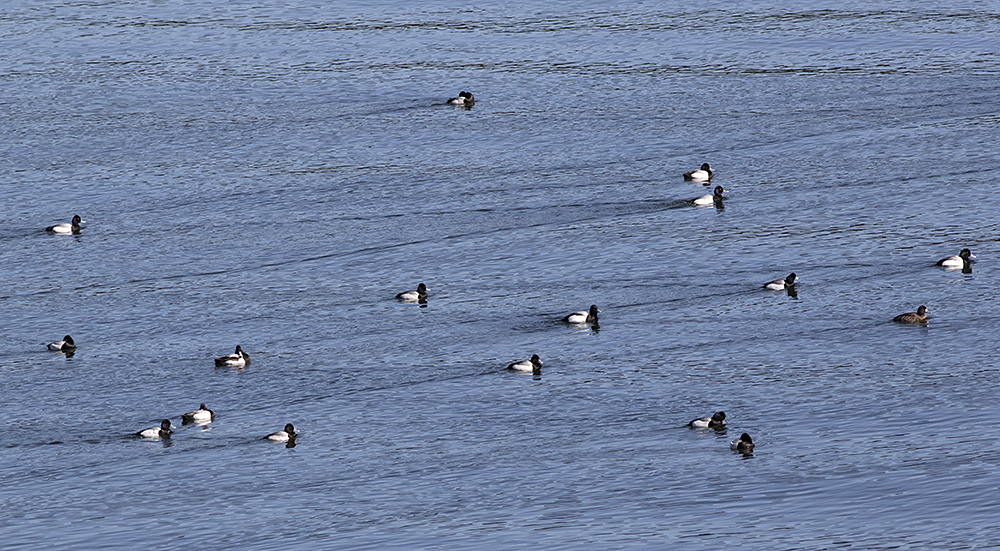
Huge numbers of Lesser Scaup can be found on our lakes in spring, but only a few will remain to breed in our area. These were just a few of the hundreds on Stump Lake in mid-April. Photo: © Alan Burger
And finally here are some spring arrivals that are seldom seen, unless one goes looking at their specialized habitats.

Long-billed Curlews certainly live up to their name. This was one of two birds seen regularly on the hayfields in Lower Nicola. Small numbers of this rare bird do breed in our area, usually in areas where the grass is not mowed through the summer. Photos: © Diana Grimshire
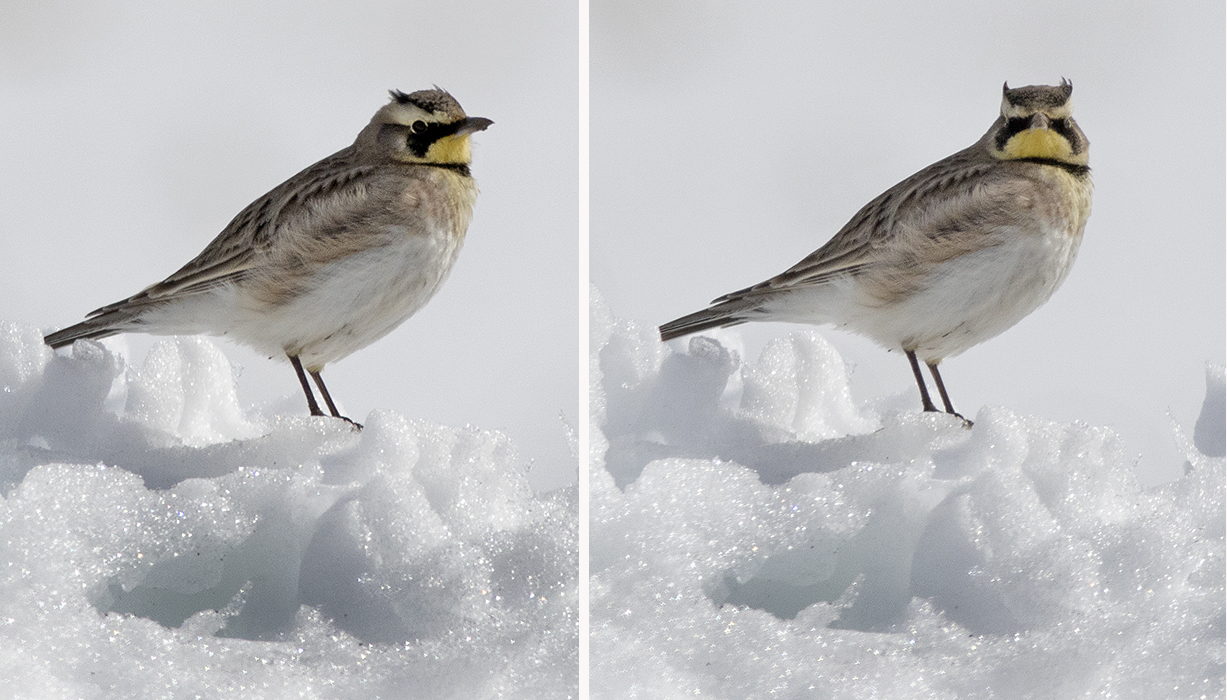
Early in the spring, a drive up to the Douglas Lake grasslands might produce some Horned Larks. This one, along with a dozen or so more, was found on March 12th. Small numbers do breed on open areas in this area, with their melodious songs reminding us that they are larks. Notice the feather tufts that give the “horned” appearance. Photos: © Alan Burger
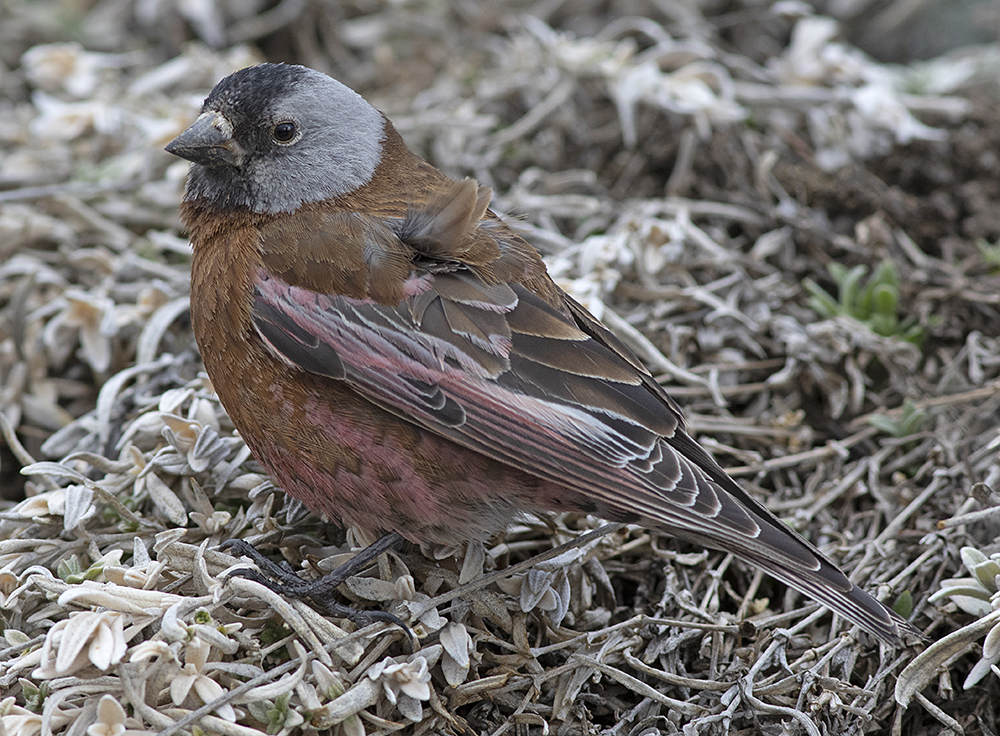
Two Grey-crowned Rosy Finches showed up among the juncos in a Logan Lake backyard on April 10th. These finches are normally found in high alpine meadows and snowfields. Photo: © Alan Burger
And the answer to the quiz ….

